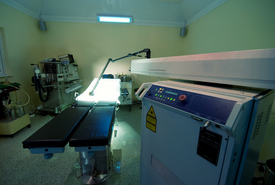
Differences
The major difference between LASIK surgery and the placement of ICLs is the manner in which these procedures are performed.
- LASIK Surgery:In LASIK surgery, a microkeratome or Intralase laser is used to create a three-sided flap in the outer layers of the cornea. Once the flap is opened, an excimer laser is used to reshape the cornea so that light properly reflects off of the retina.
- ICLs:During ICL surgery, a small incision is created in the cornea; the ICL is then inserted into the eye, in front of the lens and behind the iris. Unlike regular contact lenses, patients will not be able to feel the ICL after it has been placed in the eye.
Each procedure also carries with it some unique risks:
- LASIK:Flap wrinkles, central corneal islands, epithelial ingrowths, corneal ecstasia, diffuse lamellar keratitis, astigmatism, and dry eye
- ICLs:Increased intraocular pressure, the need for repositioning of the lens, injury to the crystalline lens, early development of cataracts, and retinal detachment
There are some other key differences between the two procedures, including:
- The ICL procedure can be reversed, while LASIK involves the permanent removal of corneal tissue. (Enhancements to LASIK can be performed to change the prescription if a “reversal” would be desired however)
- The ICL procedure is typically priced higher than LASIK surgery.
- The ICL treatment is suitable for patients that have higher degrees of nearsightedness and farsightedness, whereas LASIK surgery is generally performed on patients with mild to moderate refractive errors.
- Patients with severe dry eye, thin corneas, or other corneal problems are generally not good candidates for LASIK, but may be appropriate candidates for the ICL procedure.
- The ICL procedure takes about 30 minutes to perform, while the LASIK procedure takes about 10 minutes.
Similarities
Although LASIK and the placement of ICLs are distinctly different refractive procedures, they do share some similarities, including the ability to:
- Reduce or eliminate patients’ need for eyeglasses or contact lenses
- Permanently treat myopia, hyperopia, and astigmatism
- Produce improved, clearer vision within 24 hours
- Rarely can heal with side effects such as over correction, under correction, infection, halos, glare, double vision, visual regression
At TLC Tysons Corner, a leading Virginia LASIK practice, my team and I are committed to educating each of our patients about the vision correction options that will help them achieve clear vision. To schedule your personal consultation with us, contact TLC Tysons Corner today.



